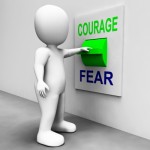Social anxiety disorder / Social phobia:
What is social anxiety disorder and what are the social anxiety symptoms? There are many different social anxiety symptoms and all of them may be signs that you have social anxiety disorder. However, having one or two of the social anxiety symptoms list is not enough to meet the criteria for social anxiety disorder. At the same time you may have social anxiety disorder even if you don’t have All of the social anxiety symptoms. There is also a difference between social anxiety disorder and shyness. The main difference is that shyness is a personality trait and that those who are simply shy usually don’t experience the negative emotions and feelings (social anxiety symptoms) that are symptoms of social anxiety.
At Barends Psychology Practice, we offer (online) counseling for social anxiety / social phobia. Contact us to schedule a first, free of charge, online session. (Depending on your health insurance, sometimes treatment can be reimbursed).
Quick jump-to menu:
Depending on one’s personality traits and personal experiences comfort levels in social situations vary per person and per situation. Some feelings in the social anxiety symptoms lists below are quite normal to experience during certain normal social situations and therefore are not necessarily signs of social anxiety disorder. Some people are by nature more outgoing, whereas others are more reserved.
Social anxiety symptoms – behavioural and emotional:
The following symptoms should interfere with daily routine, work, school or leisure activities, in order to characterize them as social anxiety symptoms. If they do not interfere with daily activities, it is most likely a normal feeling.
- Worrying about embarrassing or humiliating yourself.
- Avoiding situations which might make you the center of attention.
- Fearing situations in which you might be judged.
- Intense fear of interacting or talking with others (because it may cause embarrassment).
- Being overly self-conscious during normal social situations.
- Intense fear of physical symptoms that may cause embarrassment: sweating, blushing, dry throat etc.
- Fearing that others (will) notice you are anxious.
- Being concerned that you’ll offend others.
- Having anxiety in anticipation of a feared event or situation.
- Analyzing your behaviour after a social situation, in which you focus on your flaws.
- While analyzing your behaviour after a social situation ignoring the positive things while emphasizing the negative things.
- Expecting the worst possible consequences from a negative experience during a social situation.
Note: performance anxiety is when you experience intense fear and anxiety only during speaking or performing in public, but not in other situations.
Social anxiety symptoms – physical symptoms:
The following physical symptoms are experienced during a social situation:
- Increased heartbeat.
- Blushing.
- Muscle tension.
- Sweating.
- Dizziness or being light-headed.
- Confusing or feeling ‘out of body’.
- Nausea or upset stomach.
- Diarrhea.
- Trembling or shaking.
- Shaky voice.
- Shortness of breath.
Social anxiety symptoms – avoiding social situations:
The following situations may be avoided or endured with a lot of distress:
- Attending parties or social gatherings.
- Going on a date.
- Making eye contact.
- Eating in front of others / public.
- Entering a room when others are already seated.
- Starting a conversation / making small talk.
- Interacting with strangers.
- Being asked something out of the blue.
- Using a public restroom.
- Being watched while doing something.
- Being the center of attention (speaking or performing in public).
- Being teased or criticized.
Social anxiety safety behaviours:
Safety behaviours can help people who experience social anxiety to successfully make it through social situations. Usually these safety behaviours are very effective but make people with social anxiety disorder depended on them, causing great distress if one of the safety behaviours is not available. In the long run these safety behaviours are harmful.
Here is a list of common safety behaviours people use when they experience social anxiety.
- Taking a friend with you to social events or gatherings.
- Asking the person you are with a lot of questions to keep the focus off of oneself.
- Selecting a position in a situation in which you do not attract attention.
- Averting eye contact to avoid being noticed by others.
- Wearing neutral clothes or clothes that could cover up blushing (turtle-neck).
- Having a telephone within a hand’s reach (so you can always focus on your phone.
- Taking roles in social situations that do not require talking (serving others, taking pictures).
- Speaking rapidly and without pauses.
- Pretending a lack of interest or distance from what is happening.
- Walking with face aimed at the floor, having hands in pockets.
- Constantly checking if you are presentable.
- Laughing to hide the fact that you are nervous.


